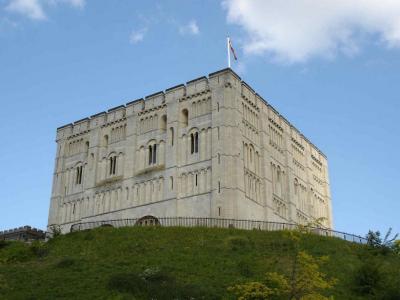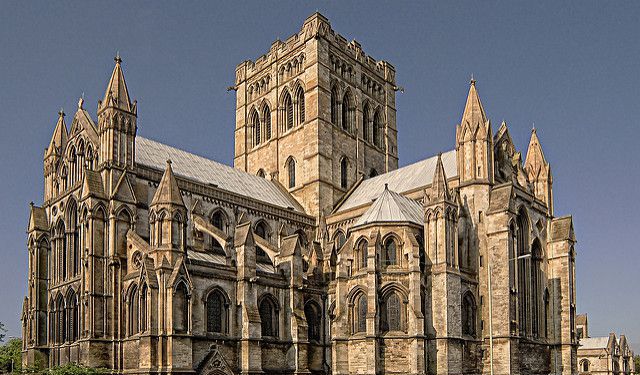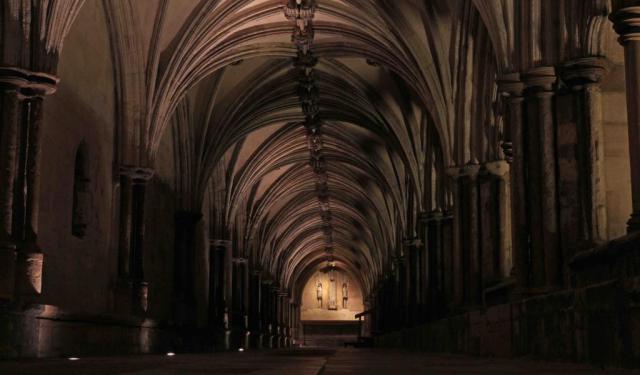Norwich Castle, Norwich (must see)
Norwich Castle was founded some time between 1066 and 1075 by William the Conqueror, the first Norman king of England, in the aftermath of the Norman conquest of England. Early in 1067, William embarked on a campaign to subjugate East Anglia, and it was probably around this time that the castle was established.
To clear space for the fort (which initially took the form of a wooden motte and bailey) the Normans demolished about 100 Saxon homes. In 1094 the construction was begun by King William (The Red) II, third son of William the Conqueror, on the stone keep which would later become Norwich Castle. King Henry I completed the work in 1121.
Parts of the castle were used as a gaol (prison), from 1220 to 1887. This was until Prison Norwich was opened at Mousehold Heath and the property was converted into a museum. The Museum and Art Gallery officially opened in 1894. The displayed here historical artifacts – of Roman, Egyptian, Saxon and Viking origins – include ceramics, porcelain and silver objects as well as paintings of the Norwich School.
The dark history of the castle, however, (as a gaol, it was routinely used for public hangings) today manifests in the form of ghostly sightings. Among them a floating skull, a mythical king (Gurgunt), a rebel leader (Robert Kett), and an old lady dressed in black.
The king is believed to have been buried within the hill of the castle with all his riches after falling into an eternal sleep. The woman is said to have been hung for murdering her husband. The museum staff sometimes spotted her in the art gallery under the castle mound, and prior to them, in 1820, terrified prisoners at the castle reported seeing her floating off the ground.
As for the rebel leader, Robert Kett, he was accused of high treason for leading a peasant revolt, now known as Kett's Rebellion, and was hanged at the castle after being tried at the Tower of London. Over the years there have been reports of an apparition of his rotting corpse hanging outside. A wall plaque placed at the entrance to the Museum in 1949 commemorates the 400th anniversary of Robert Kett's execution, saying: “This memorial was placed here by the citizens of Norwich in reparation and honour to a notable and courageous leader in the long struggle of the common people of England to escape from a servile life into the freedom of just conditions.”
Lastly in 1844, the devil was allegedly seen by two people (presumably prisoners) dancing on the castle walls.
Tips:
For extra fun there are tours of dungeons and battlements; and there is a café.
To clear space for the fort (which initially took the form of a wooden motte and bailey) the Normans demolished about 100 Saxon homes. In 1094 the construction was begun by King William (The Red) II, third son of William the Conqueror, on the stone keep which would later become Norwich Castle. King Henry I completed the work in 1121.
Parts of the castle were used as a gaol (prison), from 1220 to 1887. This was until Prison Norwich was opened at Mousehold Heath and the property was converted into a museum. The Museum and Art Gallery officially opened in 1894. The displayed here historical artifacts – of Roman, Egyptian, Saxon and Viking origins – include ceramics, porcelain and silver objects as well as paintings of the Norwich School.
The dark history of the castle, however, (as a gaol, it was routinely used for public hangings) today manifests in the form of ghostly sightings. Among them a floating skull, a mythical king (Gurgunt), a rebel leader (Robert Kett), and an old lady dressed in black.
The king is believed to have been buried within the hill of the castle with all his riches after falling into an eternal sleep. The woman is said to have been hung for murdering her husband. The museum staff sometimes spotted her in the art gallery under the castle mound, and prior to them, in 1820, terrified prisoners at the castle reported seeing her floating off the ground.
As for the rebel leader, Robert Kett, he was accused of high treason for leading a peasant revolt, now known as Kett's Rebellion, and was hanged at the castle after being tried at the Tower of London. Over the years there have been reports of an apparition of his rotting corpse hanging outside. A wall plaque placed at the entrance to the Museum in 1949 commemorates the 400th anniversary of Robert Kett's execution, saying: “This memorial was placed here by the citizens of Norwich in reparation and honour to a notable and courageous leader in the long struggle of the common people of England to escape from a servile life into the freedom of just conditions.”
Lastly in 1844, the devil was allegedly seen by two people (presumably prisoners) dancing on the castle walls.
Tips:
For extra fun there are tours of dungeons and battlements; and there is a café.
Want to visit this sight? Check out these Self-Guided Walking Tours in Norwich. Alternatively, you can download the mobile app "GPSmyCity: Walks in 1K+ Cities" from Apple App Store or Google Play Store. The app turns your mobile device to a personal tour guide and it works offline, so no data plan is needed when traveling abroad.
Norwich Castle on Map
Sight Name: Norwich Castle
Sight Location: Norwich, England (See walking tours in Norwich)
Sight Type: Museum/Gallery
Guide(s) Containing This Sight:
Sight Location: Norwich, England (See walking tours in Norwich)
Sight Type: Museum/Gallery
Guide(s) Containing This Sight:
Walking Tours in Norwich, England
Create Your Own Walk in Norwich
Creating your own self-guided walk in Norwich is easy and fun. Choose the city attractions that you want to see and a walk route map will be created just for you. You can even set your hotel as the start point of the walk.
Norwich Introduction Walking Tour
The Iceni tribe predated the Romans in the village of Caistor, near the area of present-day Norwich. In 60 AD an uprising led by Boudica had been put down and Caistor became the Roman capital of East Anglia. Anglo-Saxons settled the town of Northwic in the 4th century. By the 10th century Northwic became Norwich, a prosperous trading center.
William the Conqueror arrived with a bang in 1066.... view more
Tour Duration: 2 Hour(s)
Travel Distance: 2.5 Km or 1.6 Miles
William the Conqueror arrived with a bang in 1066.... view more
Tour Duration: 2 Hour(s)
Travel Distance: 2.5 Km or 1.6 Miles
Norwich's Haunted Buildings
The long and sometimes bloody history of Norwich has left its mark on the city in the form of spooky happenings. Indeed, nearly half of the local population have reported experiencing throughout their life something paranormal. Add to this a mildly alarming number of UFOs spotted on the outskirts of Norwich, and you get one of, if not the most haunted area in the UK.
Needless to say that in a... view more
Tour Duration: 1 Hour(s)
Travel Distance: 1.4 Km or 0.9 Miles
Needless to say that in a... view more
Tour Duration: 1 Hour(s)
Travel Distance: 1.4 Km or 0.9 Miles





